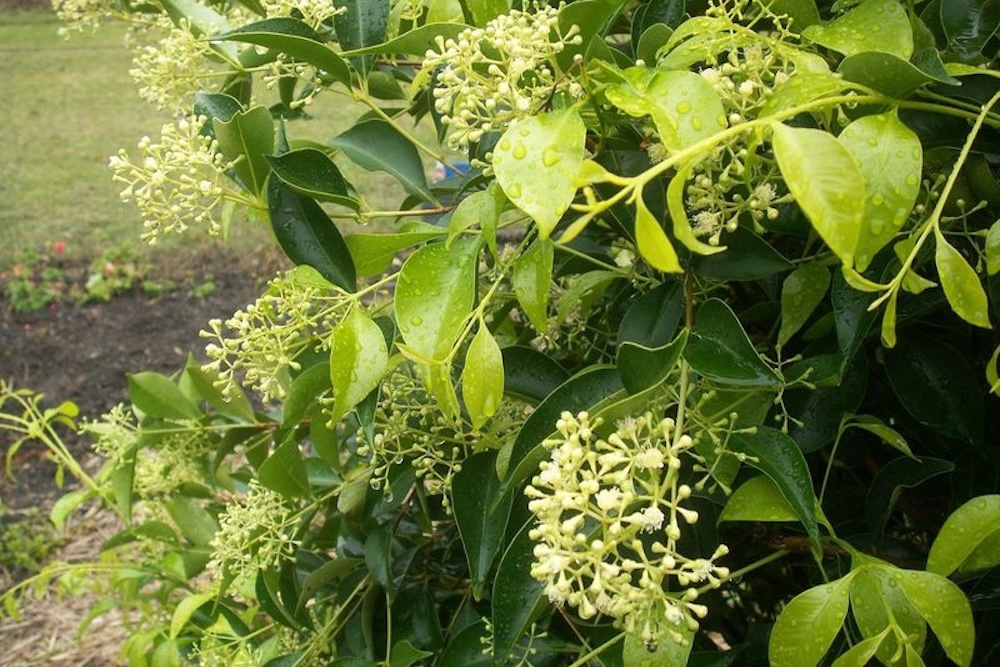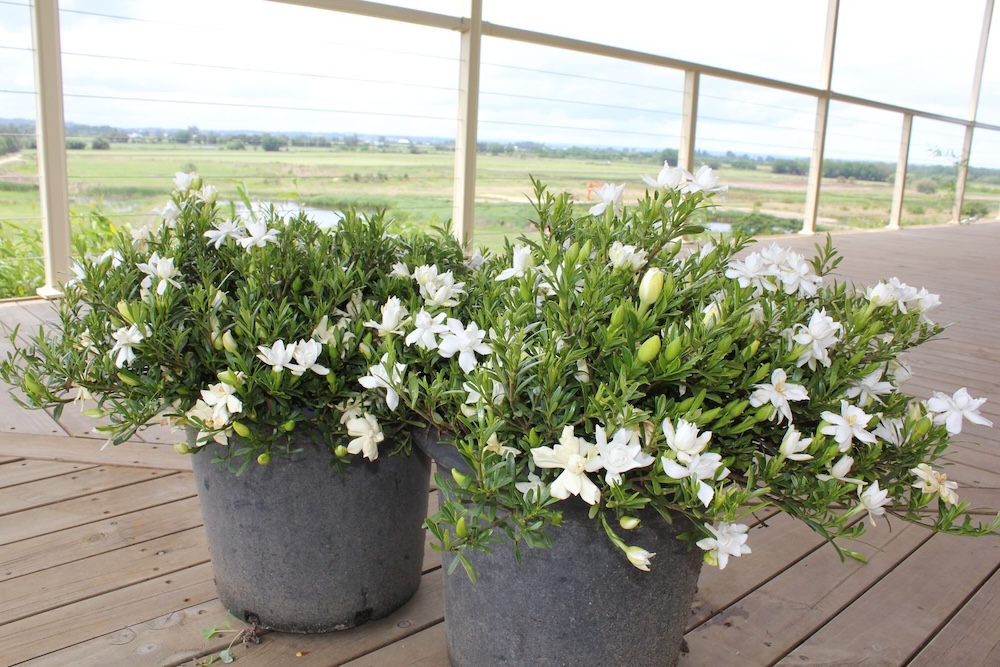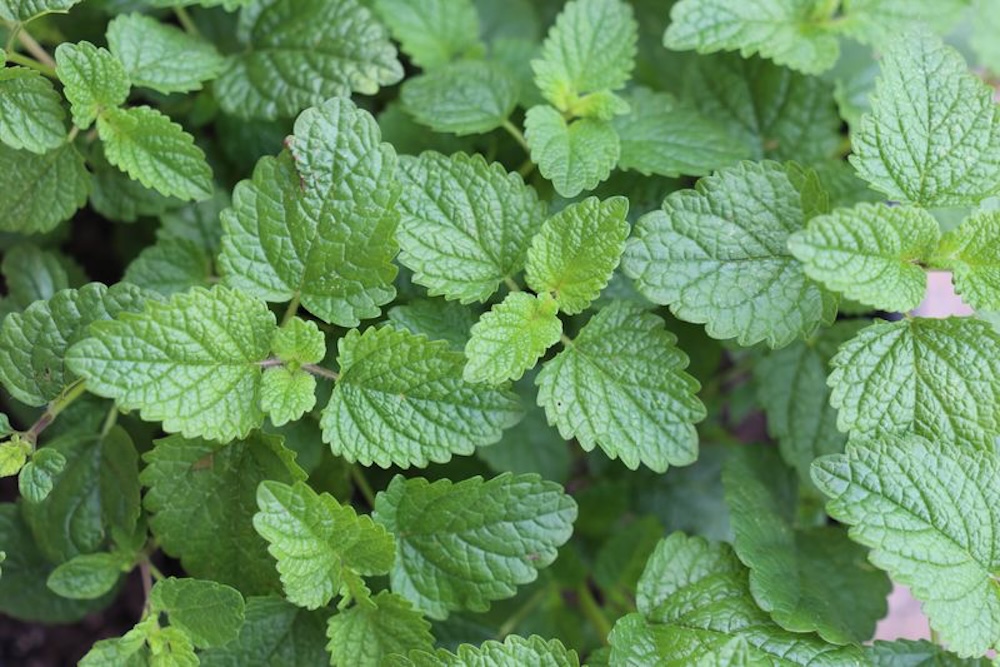Did you know that some of the plants we always thought were native to Australia are actually from Southern Africa?
Creating Fragrant Gardens: The Ultimate Guide to Smellscapes in Landscape Design
Gardens serve not just as visual spectacles but also as sensory havens that have the power to transport us to our “happy place”. This article puts a spotlight on one of the most overlooked aspects of garden design – smellscapes.
We’ll delve into sensory garden ideas that focus on the olfactory experience, exploring the role of scented plants and their significance in creating fragrant gardens. In landscape architecture and garden design, incorporating scent is an art and science. It contributes to a more immersive and enjoyable outdoor environment, helping us to connect to nature on a deeper level than using our sight alone.
What is a Smellscape?
A smellscape refers to the collective scents in a particular area, especially those designed with intention in a garden or landscape. These olfactory landscapes play a crucial role in our perception and experience of a space.
Olfactive signals, or scent cues, in landscaping, are essential in creating a multi-sensory garden experience. They can evoke memories, stimulate emotions, and even influence behaviours. Smellscapes contribute to the overall sensory experience in a garden, adding a depth of interaction that goes beyond the visual.
The Science Behind Scented Plants
Plants produce scents through a combination of volatile organic compounds (VOCs), which they release into the air. These scents can serve various purposes for the plant, from attracting pollinators to deterring pests.
For example, lilly pillies are resistant to most insect pests with a couple of notable exceptions; lilly pilly beetles and psyllids. That’s because “nature is all bloody in tooth and claw,” as Charles Darwin said, and these plants are in an arms race with their pests. Unfortunately for the lilly pilly, these two types of insects have learnt to enjoy the extreme taste of their leaves.

The diversity of scents produced by different plants is vast, ranging from the sweet, heady aroma of rose flowers to the cool, medicinal scent of eucalyptus. Each plant has its unique fragrance profile, contributing to the overall smellscape of a garden.
Interestingly, the intensity and quality of plant scents can be influenced by factors such as weather and time of day. For instance, some flowers like night-blooming cacti release their fragrance after sundown, while others like lavender emit their strongest scents on hot, sunny days.
Key Elements of a Fragrant Garden
Creating a fragrant garden involves more than just selecting scented plants; it’s about thoughtful design and strategic placement. Landscape architecture elements that contribute to a fragrant garden include pathways lined with aromatic plants, scented climbers on trellises near seating areas, and fragrant ground covers that release their scent when stepped on.
Placing scented roses near doors and windows can allow their scents to waft indoors. Melaleuca leaves cascading over a pathway encourage visitors to take in their beautiful smell – even if they do so on a subconscious level.
One key strategy in designing a fragrant garden is creating a succession of smells. This involves selecting plants that bloom and release their scents at different times of the day or year.
This ensures a continuous sensory experience, with one delightful fragrance following another throughout the seasons. You can achieve a succession of smells as visitors walk from one section of a garden to another, as well.
Selecting the Right Scented Plants for Your Garden
The olfactory plant selection process involves more than just picking your favourite scents; it requires careful consideration of several factors.
Key Factors to Consider for Smellscaping
- Climate: The first step in selecting scented plants for your garden is understanding your local climate. Some plants thrive in specific weather conditions and may not produce their signature scent if the environment doesn’t suit them.
- Soil Type: Different plants have different soil preferences. Some prefer well-draining sandy soils, while others might require nutrient-rich loam. Before choosing your plants, understand your garden’s soil type and select plants that will thrive in these conditions.
- Sunlight Exposure: Sunlight plays a crucial role in the growth and fragrance production of plants. Some plants need full sun to develop their scents fully, while others prefer partial shade. Consider the amount of sunlight each part of your garden receives when placing your plants.
- Plant Compatibility: Consider the compatibility of your plants. Some plants may not thrive if planted next to others due to competition for resources or varying water and nutritional requirements.
- Fragrance Intensity: The intensity of a plant’s fragrance can vary greatly. Some plants have subtle scents that you need to be close to enjoy, while others can fill an entire garden with their aroma. Avoid overpowering the subtle scents by placing them near overpowering scents.
- Bloom Time: Pay attention to when your chosen plants bloom. Organising your garden so that you have a continuous sequence of blooming fragrant plants can ensure your garden is always filled with delightful scents.

Popular Scented Plants for Gardens
The range of scented plants available is vast, offering a plethora of sensory garden ideas. These include:
- Roses (Rosa spp.): Renowned for their intoxicating perfume, roses are a classic choice for fragrant gardens.
- Lavender (Lavandula spp.): With its soothing, herbal fragrance, lavender is ideal for creating a calming garden atmosphere.
- Myrtaceae family members: This plant family includes lilly pilly (Syzygium, Acmena and Waterhousea spp.), eucalypts (Eucalyptus, Corymbia and Angophora spp.), melaleucas (Melaleuca spp.), and callistemons (Callistemon spp.) – all of which contribute unique scents to the garden.
- Citrus plants: Citrus plants, including lemons (Citrus limon), limes (Citrus aurantifolia), oranges (Citrus sinensis), and grapefruits (Citrus paradisi), are highly valued in olfactory landscaping for their revitalizing, zesty, and uplifting scent profiles. The aromatic notes they offer span from sharp, tangy top notes that stimulate alertness and vitality, to rich, sweet undertones that convey a sense of warmth and tranquillity.
- Lomandra (Lomandra spp.): Some types of lomandra, especially Katie Belles™ Lomandra hystrix ‘LHBYF’ PBR, release a heavenly scent when in flower.
- Azaleas (Rhododendron spp.): These flowering shrubs produce a vibrant display of fragrant blooms in spring.
- Gardenias (Gardenia jasminoides): Known for their sweet, exotic fragrance, gardenias are a wonderful addition to any fragrant garden.
- Star Jasmine (Trachelospermum jasminoides): This climber produces clusters of small, white flowers that exude a strong, sweet scent, especially in the evenings.
- Wisteria (Wisteria spp.): Wisteria vines produce stunning cascades of fragrant flowers, adding both visual appeal and a delightful scent to your garden.
Herbs: Herbs like rosemary (Rosmarinus officinalis), thyme (Thymus vulgaris), and basil (Ocimum basilicum) can add a culinary twist to your fragrant garden.
Designing Your Fragrant Garden: Practical Tips
Creating a fragrant garden may seem like a daunting task, but with some planning and creativity, you can transform your outdoor space into a sensory haven. Here are some practical tips to help you get started:
- Plan Your Design: Sketch out your garden layout, marking areas of sunlight exposure, existing plants and structures, and areas where you want to incorporate scented plants.
- Layer Scents: Just like in perfumery, layering different scents can create a complex and delightful smellscape. Combine plants with different fragrance profiles – floral, herbal, citrusy, spicy – to add depth to your garden’s scent palette.
- Provide Year-Round Scents: Choose plants that bloom and release their scents at different times of the year to ensure a continuous olfactory experience.
- Maintain Your Garden: Regular pruning, watering, and feeding will keep your plants healthy and fragrant. Be mindful of pests and diseases that could affect your plants’ growth and scent production.

Daniel’s Wrap
Incorporating scent into garden design opens up a new dimension of sensory experience. Through thoughtful plant selection and strategic design, you can create a fragrant garden that delights the senses all year round.
Whether it’s the soothing aroma of lavender on a summer’s day or the spicy scent of mint in the winter, smellscapes enrich our interaction with nature and make gardening an even more rewarding endeavour. So why not start planning your fragrant garden today? The world of scented plants awaits!




This Post Has 0 Comments